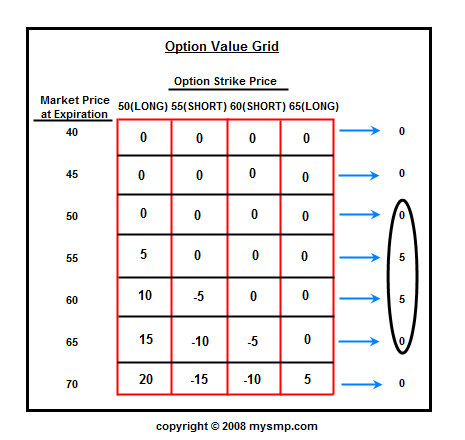Calculating Profit Potential and Max Loss on an Options Trade
Post on: 6 Май, 2015 No Comment

September 11th, 2009 Genius
The first thing to determine is whether the trade is a debit trade, where you pay money for the trade, or a credit trade, where you get money. Iron condors and credit spreads are two examples of credit spreads. Butterflies and Calendar Spreads are debit spreads.
With a debit spread, the max you can lose is the amount you paid for the trade. The max you can gain is harder to determine. I do it using the Analyze tab on my broker’s platform. On a butterfly you can make up to 200% of the debit and sometimes more. On a Calendar you can make 100% of the debit. But you normally will not. At expiration, the profit zone becomes very narrow and the Greeks (delta, gamma, theta, and vega) become very volatile and option prices make huge swings up and down.
On either of these trades, 20% profit is a good number to shoot for. So if the trade costs you $1,000, aim to make $200-$250. Once you hit your target profit, you can take some of the trade off to protect your profit and stay in the trade to see if you can make more.
But with a debit trade, you have to sell the trade to get your money. If you let the options expire, you lose everything you paid. So be sure to keep that in mind.
It’s the opposite with a credit trade. Here you get money to make the trade, and the money you get (the credit) is the max you can make.
So let’s look at a simple credit spread.
I sell 2 of the AAPL Oct 155 Puts and buy 2 of the AAPL Oct 150 Puts for a credit of .62
In this trade I want AAPL to stay above 155, if it does, I keep the entire credit.
Since the trade consists of 2 spreads (2 Sold and 2 Bought) I multiply the credit times 2 to get my total credit. 62 x 2 = 1.24. In dollars this translates to $124 credit, which is the most I can make on this trade.
Now let’s calculate my max loss.
The strikes I traded were the 155 and the 150. The difference between them is 5 points, or in dollar terms, $500. That is the most I can lose on each spread. Since I did two spreads the most I can lose on this trade is $1,000.
But wait. I also collected the credit, and that is mine to keep no matter what happens. So we take the credit and subtract it from the difference between the strikes.
1000-124 = 876. This is the max I can lose on this trade. This is also the margin/account balance I am required to have in my trading account to be able to make this trade. I am risking $876 to make $124.
If I divide 124 by 876, I get a potential return on my money of 14%.
This was a simple credit spread. In an iron condor you have to do this for the put side and the call side and then add the credits together.














